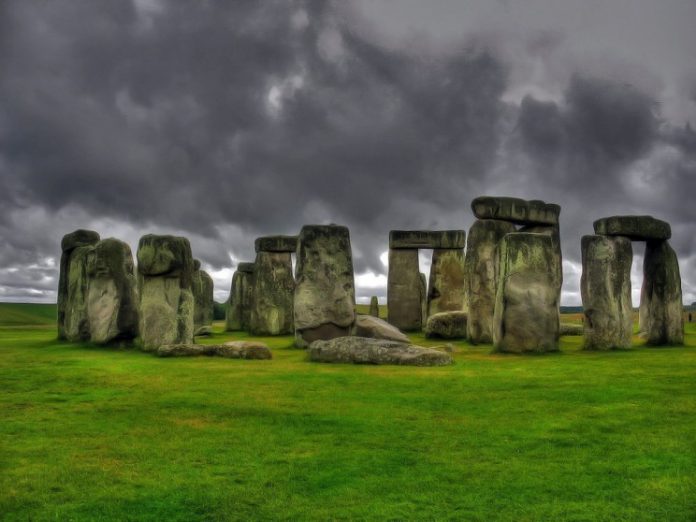Scientists have claimed that the aliens people who built Stonehenge did so using Pythagoras’ Theorem, a good two millennia before he was born.
A new book named ‘Megalith: Studies in Stone’ re-examined the ancient geometry associated with Neolithic monuments and concluded that the people who constructed them centuries ago understood the concepts of solar and lunar eclipse cycles quite well. As a result of this ingenuity, they used complex geometry and recorded it all on massive stone calendars.
Robin Heath, the Megalith expert, went on to propose that the famous British landscape and the prehistoric site of Stonehenge are linked to the Pythagorean triangle. Not just this, but builders have been utilizing the discovery of the sum of the squares of the base and perpendicular adding up to the square of the hypotenuse in a right-angled triangle (a² + b² = c²) for millennials now to come up with these prehistoric marvels.
The book further demonstrates how there is a rectangle of 4 Sarsen stones in one of the earliest incarnations of Stonehenge that dates back to 2750 BC. These stones when split diagonally in half form a perfect Pythagorean triangle of the measurements 5:12:13.
In addition to this, the eight lines radiating from the triangles and the rectangle align perfectly with the most important dates present in the Neolithic calendar. They include the winter and summer solstices and the autumn and spring equinoxes as reported by Telegraph.
Editor and contributor of Telegraph, John Matineau further cleverly states, “People often think of our ancestors as rough cavemen, but they were also sophisticated astronomers. They were applying Pythagorean geometry over 2,000 years before Pythagoras was born.”
Woodhenge which stands almost two miles from Stonehenge in the north-east direction was apparently also built using the Pythagorean theorem with a 12:35:37 triangle. Furthermore, the book reinstates the fact that there were several stone circles on the site that weren’t entirely circular.
However, their geometry is derived from the Pythagorean theorem using whole numbers of the Megalithic yards that equal 2.72 feet. This, the book further comments, was most probably laid out with the use of pegs and ropes.
In addition to all these fascinating trivia, the colossal stones on this prehistoric site were also surrounded by 56 stones or wooden posts at one point of time. They could potentially be used to predict eclipses and know the position of the moon, the sun, and all the lunar phases.
In the same vein, the bluestone horseshoe that is placed in the center of the ancient site is considered to be made up of 19 stones which reflect the number of years taken by the moon and the sun’s Metonic cycle to reach its full circle and then reset.
The authors of the book also believe that after the rise of Christianity in Britain, most of this knowledge of the theorem was lost.















